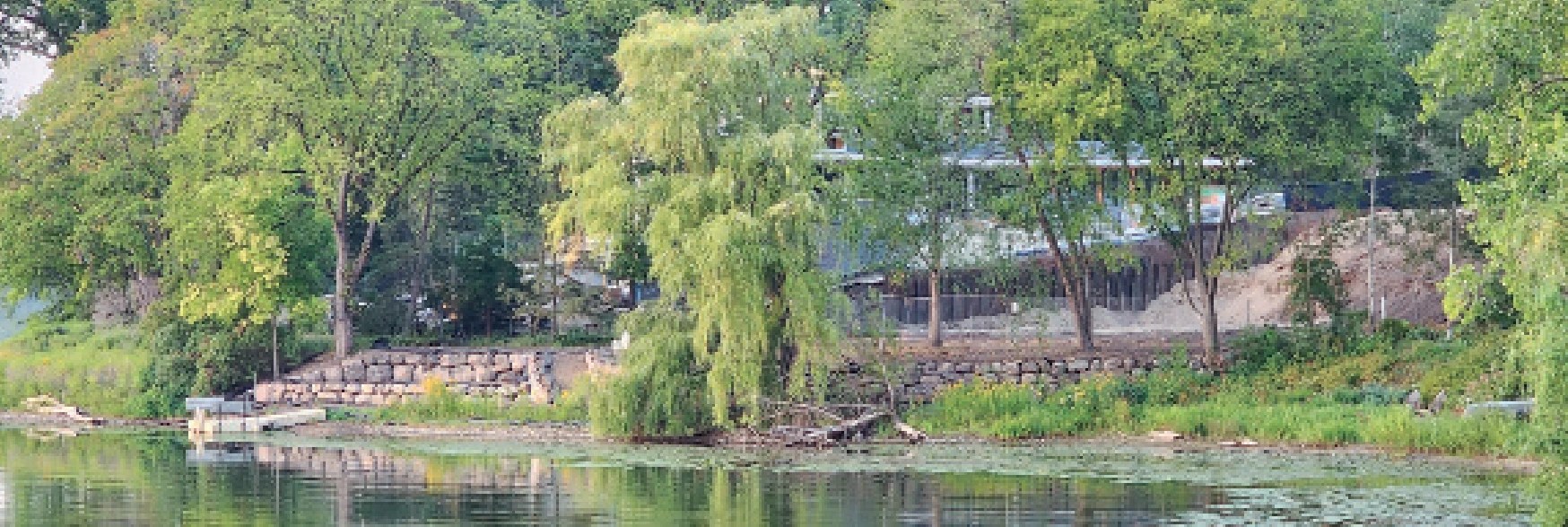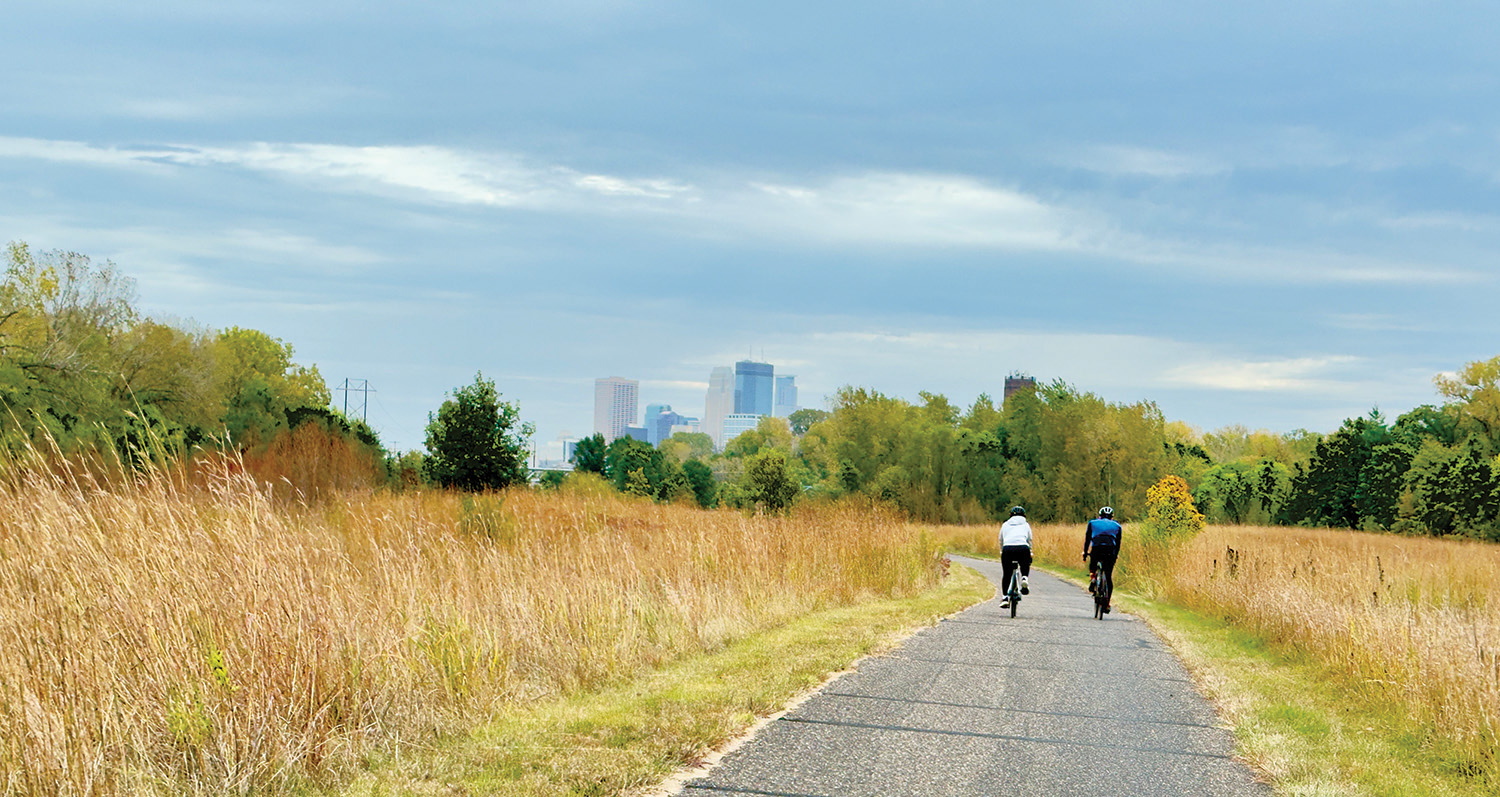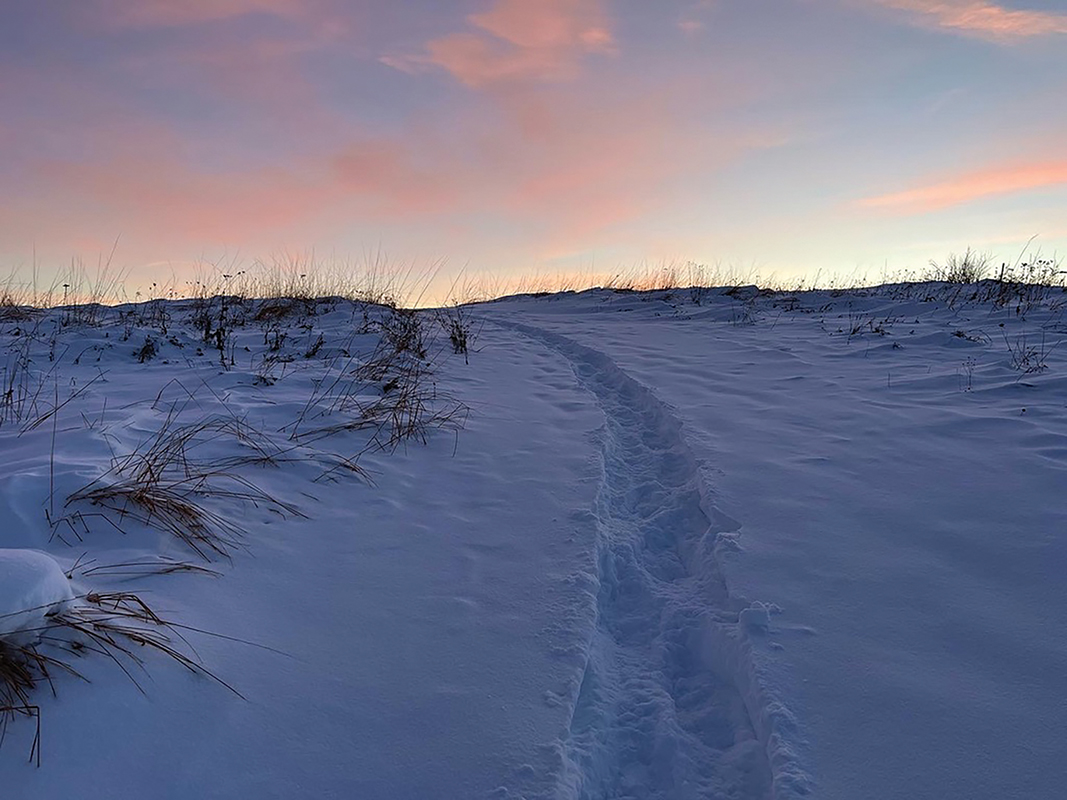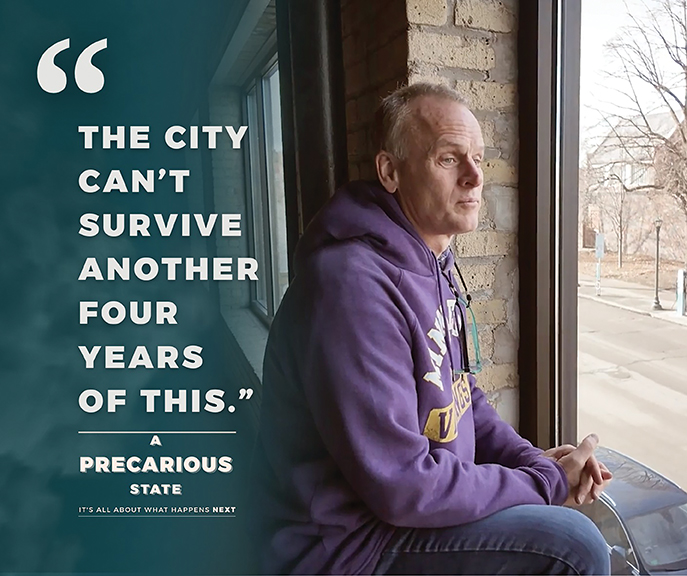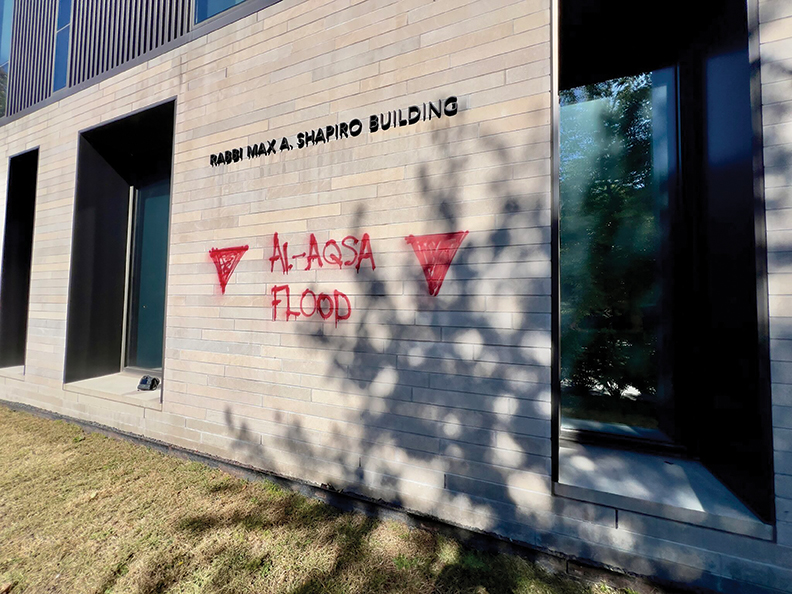When the boulders arrived next door in early August, Deb and Bob Marzec started sending emails. The large rocks were destined for a nearly 200-linear foot wall complex on the shores of Cedar Lake, causing the Marzecs immediate concern. They live on Park Lane in the Cedar-Isles neighborhood, on the southeast shoreline of Cedar Lake, one of the few locations in the city where homes are located directly on lake shore.
Strictly speaking, the Park Lane homes don’t sit directly on the lake shore, but are separated by relatively narrow strips of land owned by the Minneapolis Park and Recreation Board, and used by those homeowners subject to long-standing, revocable easements with the park board. Many of these so-called easement lands contain improvements built by homeowners, referred to as “encroachments.” These encroachments include docks, steps, retaining walls and other features.
Readers of the Hill & Lake Press will likely recall that the status and use of the Cedar Lake easement lands was one of the most contentious subjects in the park board’s lengthy Cedar-Isles planning process, which concluded in July of this year. Readers may also recall that in December 2021, the park board voted to revoke the Park Lane easements upon the next sale or transfer of the affected property, amid a slow but steady drumbeat of pressure to make the use of these easement lands more public than private.
The early “initial concepts” for the Cedar-Isles Plan included proposals to construct a walking path along the easement lands to the Kenilworth Channel or, alternatively, building a boardwalk over the lake, a step that would effectively eliminate all practical water access for many of the Park Lane homeowners. After more public input and extensive internal discussions, the Community Advisory Committee (or “CAC”) voted to reject both a path and a boardwalk in favor of a recommendation that the existing easements be revoked within 10 years and the shoreline be naturalized, with a walking path revisited later only if feasible.
The Marzecs’ objections to the new retaining wall was rooted in this history. When they moved into their home in 1986, their backyard had been relatively untended for years, but most of the neighboring Park Lane properties had green lawns that sloped naturally down to the lake. Among other things, this meant that the lake shore was actually walkable, down to South Cedar Beach. The only wall near the lake shore was a roughly one foot-high fieldstone “seawall” that spanned several properties. Remnants of this seawall still exist (as do some photos to show complete seawall), but these remnants are dwarfed by the new construction.
The original landscape changed in the mid-1990s, when the house next door changed hands, and the new homeowner constructed a nearly 300-linear foot retaining wall of treated timber on park board land. Prior to that point, the Marzecs report that the home’s back lawn featured a gradual slope to the lake shore. But construction of the retaining wall and the addition of truckloads of fill raised that lawn by roughly four feet until it dropped off at the water’s edge. As a practical matter, the Marzecs say this construction ended neighbors’ ability to easily walk the lake shore. Fast-forward to the present, and the park board now describes the southeast Cedar shoreline as ranging “from natural and planted buffers to lawns that extend to shoreline, armored with boulders or retaining walls.”
For their part, the Marzecs initially hopped on the “green lawn” bandwagon after they moved in, reclaiming their yard from underbrush, but that changed in the mid2000s. Inspired by a visit to a garden filled with native plantings, Deb gradually began converting their green lawn into a native flower garden, covering the park board easement land and flowing gently down to the lake shore. Today, the Marzecs’ backyard is arguably the best exemplar of the park board’s vision for a naturalized lake shore on this portion of Cedar Lake.
So, given this background, how is it that the Marzecs will now be living next to a new, nearly 200- foot boulder wall? The answer is complicated, and rooted in park board history and process. For starters, the new property owner (who, to be clear, is not alleged to have done anything wrong) purchased the land in 2021, before the park board passed its resolution revoking the Park Lane easements upon sale.
In addition, while the CAC recommendation for naturalizing the shoreline dates to August 2022, that recommendation was not incorporated into the final draft of the Cedar-Isles Plan until January 2023, and did not become official park board policy until the plan was approved by the full board on July 5, 2023.
None of which is very satisfying to the Marzecs. Deb raised concerns regarding replacement of the existing retaining wall as early as March 2, 2022, writing in an email to Commissioner Elizabeth Shaffer that “we know how fortunate we are to live on the lake shore and want to be good stewards of our natural resources… now with new construction contemplated is the time to bring [the neighboring lake shore] back to its original, natural state.”
Further, park board staff was aware of the pending passage of the Cedar-Isles Plan, and its likely implications for the Park Lane properties. When Ms. Marzec again raised concerns about the retaining wall in late June 2023, she received an email from park board staff stating, “we have placed the permit application for the property on hold pending the final consideration of the LOI/Cedar Lake master plan by the Board. We prefer to respond to your request for information after the board meeting and we have time to review our land policy and past board approvals.”
Ms. Marzec says that’s the last she heard from the park board on the subject until the boulders started arriving in early August. As for “past board approvals,” there appear to be only two of any relevance. First is a “temporary” permit from 1941, issued to seven Park Lane property owners, permitting the maintenance of existing encroaching structures, but which does not reference a retaining wall on the property in question. The second, from 1943, is a permit specifically granting permission for the property owner to construct an eight-foot dock extending from the center of an existing barbeque pit. Neither stands in contradiction to the Marzecs’ statements that the retaining wall currently being replaced was constructed in the 1990s, nor has there been reference to any permit associated with that construction.
So why and when did a permit for the current project issue? As to timing, the construction permit itself was issued on August 17, 2023, and grants permission for construction of the retaining wall, along with the “installation of native plants along the shoreline at the completion of the wall work.” That permit, however, references a separate letter signed by the park board superintendent and dated July 20, 2023, which the permit refers to as an “approval.”
The July 20 letter appears to rely on the 1941 and 1943 encroachment permits as the basis for that approval, although neither indicates the presence of a retaining wall at the location in question. Further, a park board representative authorized to speak on this matter confirmed that the park board has not been able to locate the plat map referenced in the 1941 permit that apparently did show the encroachments existing at the time. In short, while the park board deemed this a sufficient basis for a permit to issue, it does not undercut the Marzecs’ assertion that the old wall was actually built without a permit in the 1990s.
Regardless, the superintendent’s July 20 letter specifically references the Cedar-Isles Plan, the revocable nature of encroachment permits, and specifically “cautions that you [the homeowner] will have to remove any part of the wall, plantings and etc. that encroach on MPRB land at a time wholly accommodating the shoreline restoration.”
The story does not end there, however. On August 15, 2023, Commissioner Shaffer sent an email to the Marzecs stating that the permit would issue, but also indicating that the superintendent’s letter had been sent “without board awareness.” That same day, she submitted a resolution to the board imposing a one-year moratorium on future construction permits immediately adjacent to waterbodies without full board approval, while the MPRB studies the status of existing encroachments, reviews its policies and develops a workflow plan for orderly administration of future permit requests. That resolution passed two board committees the next day, and passed the full board on September 6.
In the meantime, along with the reality of the new boulder wall, the Marzecs are left with more questions than answers. Among them: How does a structure-specific 1941 permit provide a basis for replacing a retaining wall they saw being newly constructed in the 1990s? How will this impact the Cedar-Isles Plan’s goal of a naturalized shoreline? And will this accelerate public pressure to revoke the existing easements? Time will tell.
